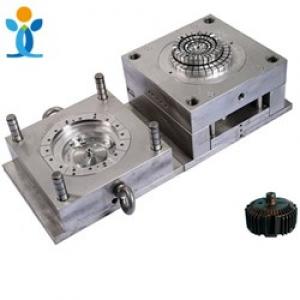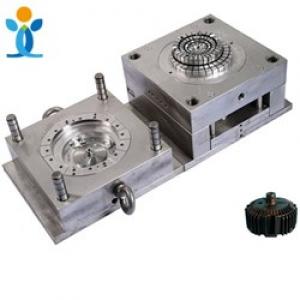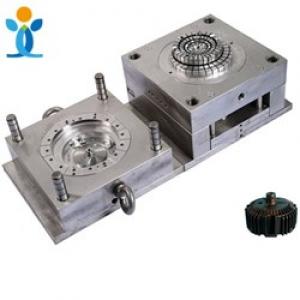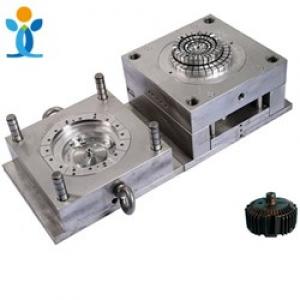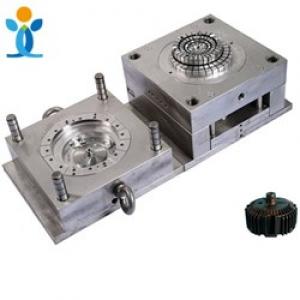Factors affecting the injection process
Factors affecting the injection process
Detailed filling process of injection molding
Ejection:
From filling to volume filling
It is affected by injection speed, barrel temperature, mold temperature, material fluidity, injection pressure, injection time and position.
It mainly affects the appearance and structure of the finished product.
Feeding:
After injection, continue to squeeze the plastic into the mold cavity to an appropriate amount.
Affected by switching position / injection time and injection pressure.
Affect the integrity of production (shape, surface, dimensional accuracy), product batch edge, weight, etc.
Pressure maintaining:
It is necessary to supplement the material shrinkage in the mold cavity and maintain the plastic from flowing back from the gate.
It is affected by mold temperature, holding pressure, holding time and gate size
Affect the weight, size, vacuum bubble, depression, etc.
Forming shrinkage analysis: (dimensional change)
After the internal pressure of the melt entering the mold cavity drops back to an atmospheric pressure, it will begin to shrink. However, due to the difference of pressure and specific volume distribution in the mold cavity, the timing and shrinkage rate of shrinkage at different positions of the mold cavity are different.
Definition: within 24-168 hours after molding, and under the environment of 23 ℃± 2 ℃, the percentage of the difference between the molded product and its mold cavity size is called the molding shrinkage. If the molded product shrinks again after 168 hours, this part is called post shrinkage.
Molding parameters and precautions
Ejection speed:
The injection speed is slow, the plastic is carried out in the mold cavity, there will be more heat loss, the flow viscosity will increase, and the service pressure loss will increase.
Higher firing rate can often obtain molded products with higher precision and less deformation. Only through areas such as small meat thickness, fierce change and corner, it is easy to have poor appearance, poor exhaust, batch front and incorrect pressure holding switching.
Switching of pressure maintaining:
If it is switched too early, the size of the finished product is easy to be insufficient, even short shot and surface depression. On the contrary, it will form excessive compression. If it is small, the size will be too large, flash, whitening and deformation. If it is large, the mold will be damaged.
Pressure maintaining switching is usually controlled by injection stroke (position), time, etc.
Pressure maintaining size setting:
If the holding pressure is too high, overfilling will occur, which makes the plastic that has entered the mold cavity countercurrent,
The correct and appropriate pressure holding setting should be based on the principle that the screw can continue to push to the lower pressure of the target point after passing the pressure holding switching point.
In the holding stage, the pressure in the mold cavity decreases gradually due to the cooling of the plastic, so the pressure holding should be adjusted appropriately, otherwise it is easy to form high stress residue.
Setting of pressure holding time:
The pressure holding time should be maintained until the gate condenses. It is meaningless for too long, but if the time is too short, it is easy to reverse the flow, making the position near the gate easy to sag and insufficient size.
Whether the holding time is appropriate or not should usually be judged by the stability of weight.
The gate is small, the mold temperature is low, and the pressure holding time should be set shorter. If the situation is opposite, the time should be set longer.
Setting of cooling time:
Most of the cooling of plastics in the mold cavity starts from the pressure holding switching and ends the mold opening. The theoretical cooling time = pressure holding time + Post cooling time.
The required theoretical time shall be based on the principle that the product can be pushed out smoothly (without deformation), and its length varies with the thickness, material and die cooling speed of the formed product.
Gate thickness and mold temperature will affect the holding time (the cooling time set by the machine, that is, the post cooling time). If the gate is large and the mold temperature is high, the holding time shall be appropriately extended, otherwise, the holding time shall be appropriately reduced.
Setting of mold temperature:
If the mold temperature is set too low, the molten glue flows in the mold cavity, and the temperature drops rapidly, which increases the material flow resistance, so the pressure loss increases, increases the internal stress and increases the pressure in the mold cavity.
High mold temperature setting:
Increase the crystallinity and more uniform structure of the molded product, reduce the residual internal stress, deformation and improve the strength, reduce the flow resistance of the material during filling, reduce the pressure loss, and make the product have good appearance luster, but it is prone to burrs, increase the near gate part and reduce the depression at the far gate part, reduce the bonding line and increase the cooling time.
